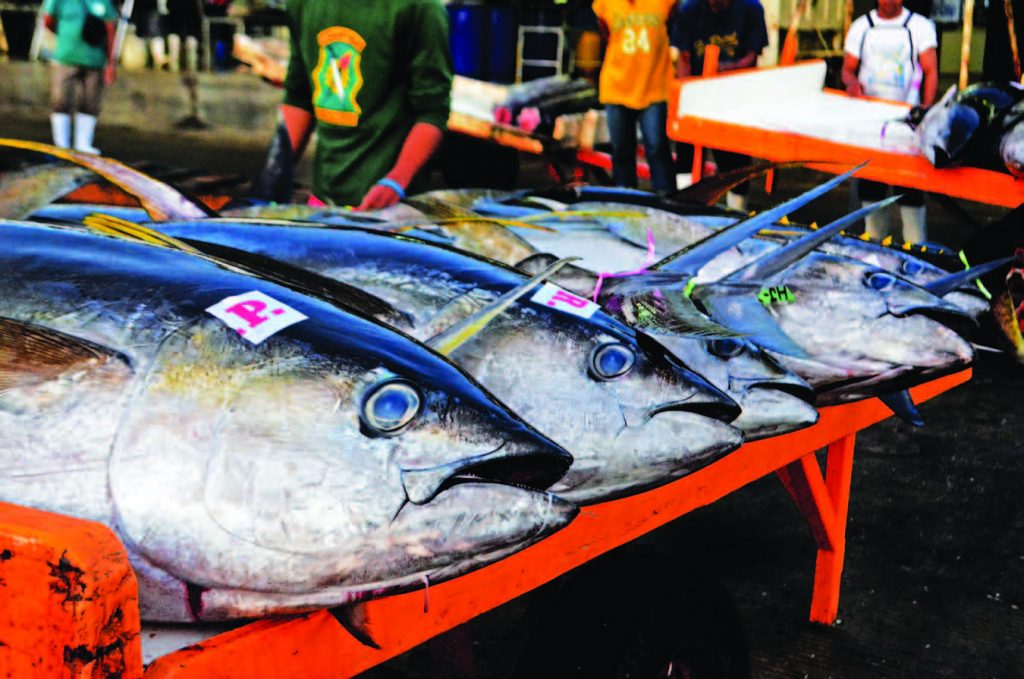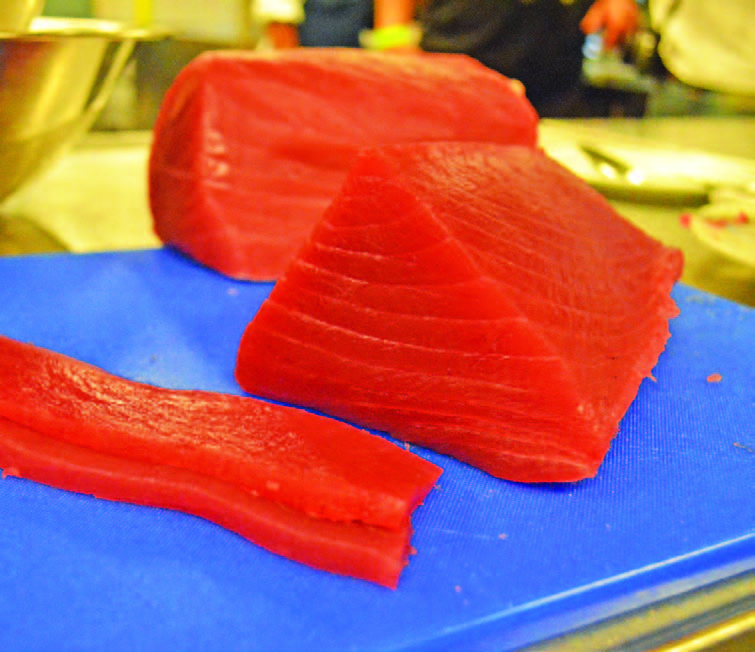In January, a Japanese sushi tycoon bought the most expensive fish in history, a 278-kilogram Pacific bluefin tuna. The price? P155 million – more than enough to buy four million kilograms of rice. Enough to feed 50 people hamburgers every day for the next 50 years… even a century from a buy-one, take-one joint.
But did you know that just a few decades ago, tuna of all types were considered trash fish? “Trash fish” is a fisheries term for low-value fish which are either discarded or dried and turned into fishmeal. Tons of tuna were ground up and turned into cat food. According to the Smithsonian’s website, some of the larger fish were even dumped into landfills!
But in the 1970s, a new type of delicacy rose to popularity: sashimi.
The price of high demand
Fuelled by new demand, the International Union for the Conservation of Nature (IUCN) estimates that bluefin fishing levels rose by 2000% in the Western Atlantic from 1970 to 1990. At the same time, tuna prices soared some 10,000%! Connoisseurs paid top peso, dollar, euro, and yen for tuna meat – particularly loins – which are sliced into sashimi or seared as steaks.

And so it was that tuna became the most expensive fish in the world, proving that the commodification of seafood products drives not just economic growth, but also overexploitation.
Ranging in size from the 1.5-foot bullet tuna to the gigantic 15-foot Atlantic bluefin, tuna are bullet-shaped predatory pelagic fish that swim through the seven seas. Their meat is especially red and juicy because of large amounts of myoglobin, which allows them to supercharge their muscles with oxygen, letting them swim at over 70 kilometers per hour. The Philippines, one of the luckiest nations in terms of marine biodiversity, is the world’s third largest tuna producer. Tuna provide good incomes for fisherfolk while generating thousands of jobs in vessels, canneries and other segments of the supply chain.

In recent years though, the rising number of fishers and large fishing vessels targeting these fish have depleted stocks, putting the livelihoods of Pinoy fishers and other tuna sector workers at risk. In particular, the unregulated use of giant nets called purse seines and floating aggregation devices called payao are fast sundering stocks. Many of the country’s tuna fisheries are severely overfished. Globally, many tuna stocks are in severe danger of collapse – and this is where the Wild Side comes in.
Looking for solutions
Two environmental think tanks – VB Consultancy and Best Alternatives – are currently pushing for sustainable management mechanisms like targeted handline fishing, catch limits, improved enforcement and closed-loop tuna farming. Closed-loop farming means that aside from an initial batch of breeders, tuna no longer need be caught in the wild, allowing dwindling wild stocks to recover.
Though vastly inefficient for feeding people – farmers need anywhere from 15 to 20 kilos of lower-value fish for tuna to put on a kilo of weight – the fact that individual bluefin tuna can be auctioned for millions of Pesos means the opportunity shouldn’t be ignored, particularly if funds can be channelled for much-needed research and marine conservation.“Most aquaculturists still think producing captive-bred tuna from eggs is impossible – but much has changed in recent years,” explains environmentalist and aquaculture expert Jonah van Beijnen, head of VB Consultancy. “In Europe and Japan, the culture of tuna started many years ago with fattening operations. About 10 years ago, with the number of fattening operations rising and most tuna stocks overfished or fished close to their maximum sustainable yields, a number of governments, nonprofits and other stakeholders expressed their concerns about the sustainability of these farming practices.”
This eventually drove the European Union and Japanese governments to steer their aquaculture sectors away from fattening wild-caught juvenile fish and instead invest in developing technology for the sustainable closed-cycle aquaculture of tuna.

Today hatchery projects for critically-endangered Atlantic bluefin tuna (Thunnus thynnus) are operating in Spain, Malta, Greece, Croatia, Egypt and Turkey. Since 2014, many of these projects have produced small quantities of fingerlings and harvestable fish. The first tuna products from these efforts are already available in the Netherlands.
In Japan, scientists have been working hard to close the lifecycle of the closely-related Pacific bluefin tuna (Thunnus orientalis), another endangered species which is also found in the Philippines, especially around the recently-protected Philippine Rise, east of Luzon. After many years of trial and error, approximately 20 Japanese hatchery facilities are now producing Pacific bluefin tuna with an average survival rate estimated from 3 to 5%.
Separate initiatives in Panama (South America) and Bali (Indonesia) have been focusing their efforts on yellowfin tuna (Thunnus albacares), the golden sickle-finned tuna most Filipinos eat. The projects have been able to produce plenty of eggs and fingerlings. Although there are still plenty of remaining challenges in improving the survival of tuna larvae and fingerlings, improving the sustainability of feeds and minimizing the environmental impacts of farming activities, the potential of the sector is clear.
“With sustained demand and high price points for tuna, it definitely makes sense to invest in closed-loop farms,” adds Anton Palo, general manager of Food Link Advocacy Cooperative. “Many of the top tuna importers are already our trading partners. Between the United States and Japan alone, we’re seeing around 150,000 tons of fresh or frozen tuna yearly, while the European Union annually imports over 550,000 tons of processed tuna. A well-executed tuna aquaculture system will satisfy growing demand in countries whose preference is not just limited to quality, but on good environmental practices.”
The Philippines, with many islands and surrounding calm and productive waters, sits at the center of the natural spawning grounds of wild yellowfin tuna. Juvenile tuna love these warm and calm waters, teeming with food. This might just give the Philippines a big advantage in the future closed-cycle culture of tuna.
A way forward would be to develop a hatchery and research institute for the closed-loop farming of both yellowfin and bluefin tuna in the Philippines. Doing so will alleviate the pressure on wild tuna populations while generating significant income for the country. “In an ideal world, we should only be taking as much fish as our oceans can sustain,” concludes Van Beijnen. “But rising demand for tuna means we need to develop bold solutions to save them.”
This appeared in Animal Scene magazine’s August 2019 issue.
Related stories:
– Comedian Jon Stewart turns farm into animal sanctuary for rescued farm animals
– Scotland announces plan to clean up fish farms to protect the environment
– Norwegian parliament bans fur farms in new legislation






